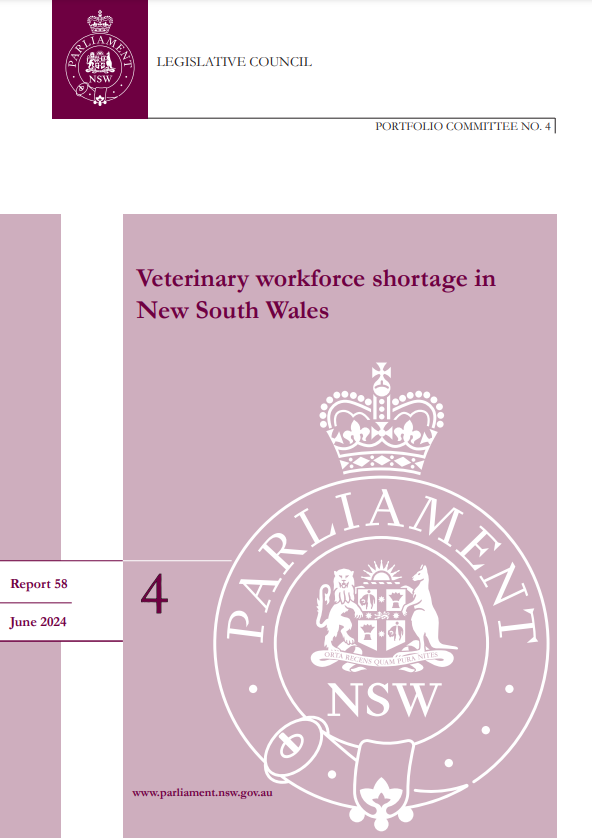Veterinary workforce data
09 Aug 2024
Image: Veterinarian swabbing a heifer - image: Dr Lou Baskind, South East Local Land Services.
The challenges facing Australia’s veterinary workforce are well recognised and persistent. In 2021, my predecessor Dr Mark Schipp wrote an AVA News article that analysed some of the causes and consequences. This is an issue that is close to my heart – as it would be to all of you.
From the rural towns without a veterinary clinic, to new graduates without adequate support, and business owners at risk of burnout without a break – the challenges within our profession are diverse, complex and significant. And critically, these issues are compounded by mental health and wellbeing factors that are completely unacceptable.
Despite the longstanding and entrenched nature of workforce issues, which brings considerable fatigue, our veterinary community has remained committed to seeking a better future for our profession. This is a testament to the innate strength of the profession. However, we can’t effect change alone.
So where to from here?
There is a saying that if you can’t measure it, you can’t manage it.
One of the difficulties that I’ve encountered while advocating for our profession is the lack of comprehensive national data on our workforce. It is not enough to know that our profession is impacted by workforce challenges. For those outside the veterinary profession, we need objective evidence to demonstrate where and why those challenges exist. And for those working on solutions, we need insights that help us to understand what changes in policy, including education and employment, will be most effective at turning things around.
Some helpful information exists. There are a range of datasets collected by government, universities and industry groups, including the AVA Workforce Survey that many of you would have recently completed. But these sources are fragmented, and currently there isn’t a centralised national data source which provides current and comprehensive coverage across all veterinarians.
A complete workforce dataset requires information about the various sectors, settings, and locations in which work occurs and the work hours for each. Information is also needed on workforce dynamics, that is, the inflows and outflows, including new graduates, immigrants, changes in hours worked, and retirement or other exits from the profession. These data items provide a comprehensive picture of the current profession and workforce dynamics affecting supply.
Other professions and countries show us what is possible. The education sector uses the Australian Teacher Workforce Data (ATWD) model, managed by the Australian Institute of Health and Welfare (AIHW), and the health sector uses the National Health Workforce Data Set (NHWDS) for comprehensive workforce analysis utilising registration and survey data. New Zealand’s veterinary sector employs a standardised survey during annual veterinary registration to gather workforce data and regularly publishes an analysis based on this data.
 Image: Allied Health Workforce Data Gap Analysis - Australian Government - Department of Health - Issues Paper 10 June 2022 - Health Policy Analysis Pty Ltd.
Image: Allied Health Workforce Data Gap Analysis - Australian Government - Department of Health - Issues Paper 10 June 2022 - Health Policy Analysis Pty Ltd.
Veterinary Workforce Data and Governance Roundtable
My office has organised a Veterinary Workforce Data and Governance Roundtable on 19 August in Canberra to discuss the option that may work best in Australia. The select invitees from key organisations and sectors in Australia’s veterinary profession are well placed to provide insight and collaborate on a process and governance model that will serve us all. I’m grateful to the AVA for their planned presentation and participation. I’m also heartened and inspired by the enthusiastic response we have had to our invitations.
Of course there will be barriers to overcome. We need constructive national collaboration, as has occurred with national recognition of veterinary registration. We need to be able to assure data security and personal privacy. Perhaps most significantly, we need an effective data governance model. With the impact of and responsibility for Australia’s veterinary sector being widely distributed, no one organisation can progress this alone.
I’m optimistic about the benefits that will flow if we’re successful.
It would allow us to better advocate for policy support, such as student debt relief or paid student placements, that we’ve already seen implemented for other professions.
It would allow us to better consider and implement existing recommendations around veterinary workforce challenges, such as those delivered by the recent Parliamentary Inquiry into the veterinary workforce shortage in New South Wales, whose report was publicly released on 28 June. It was excellent to see a high level of interest and submissions, including from the Department of Agriculture, Fisheries and Forestry. The 34 recommendations that were delivered provide plenty of substance, and I met recently with colleagues from the New South Wales Government who will be considering and responding to these.

Having a deeper understanding and data source of Australia’s veterinary workforce would allow my office to more accurately meet our international reporting obligations when annually submitting data on our veterinary service to the World Organisation for Animal Health (WOAH).
Ultimately, it would allow the pursuit of a national veterinary workforce strategy.
No single entity ‘owns’ Australia’s veterinary workforce challenge, but we must all work together as a community to find the solutions. Much like our profession provides a common good for Australian society, a national veterinary workforce data source would provide a common good for our profession. It would support a wide range of research, analysis, advocacy and intervention. We owe it to ourselves.
For the latest updates on the work of the Office of the Chief Veterinary Officer, please follow the social media channels of the Australian Chief Veterinary Officer on Twitter/X and LinkedIn.
